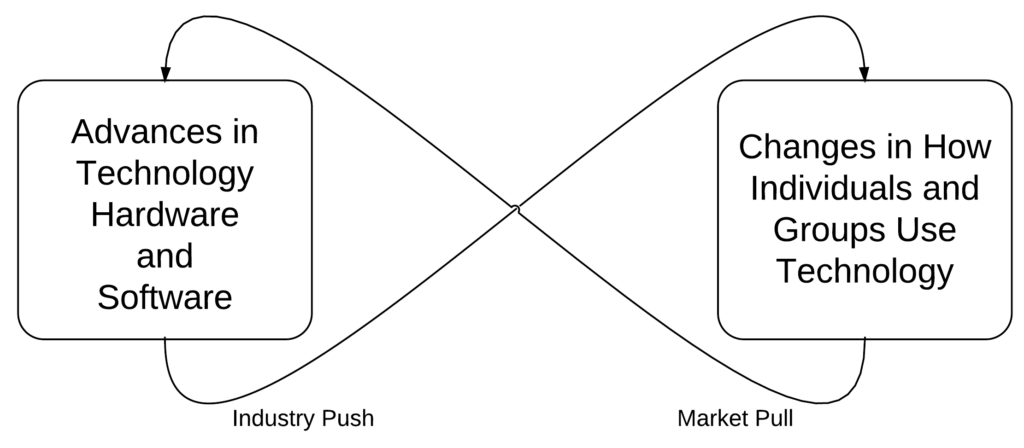Technology systems are evolutive; the systems and the components are in a perpetual state of development and refinement. This evolutive nature is exaggerated in modern ICT which evolves much more rapidly than other previous information systems. The forces that drive this evolution include both advances in the capacity of the ICT and changes in how people use the ICT. For example, as advances in computing made cell phones inexpensive and ubiquitous, more people used them, which increased the demand for both voice and data devices and networks; reflexively the industry expanded to access to more and more diverse data systems which further increased the use of handheld computers.
The term reflexive was originally used to describe the reciprocal and simultaneous effects between social science researchers and the subjects of their research. In the research focusing on the modern information technology and its role in creating the sociocultural context of the 21st century, the term reflexive is used to describe the reciprocal influences of technology devices on the tasks necessitating (and necessitated by) information technology and the individuals and groups who use that technology for those tasks (de Vaujany 2008). Especially when describing new markets, the reflexive relationships are described as push-pull relationships; new technologies are pushed to the market by manufacturers and the market pulls new devices from the manufacturers (see figure 8.1). These reflexive relationships can lead to expanded and increased use of ICT for a greater number of tasks or for greater and more diverse populations, they can limit use of information technology, or they can lead to qualitatively different interactions using ICT.
While there is evidence K-12 classrooms are information-rich environments and ICT is present, the reflexive forces that drive the evolution of ICT and it use in society appear absent from those classrooms. It is not unusual for technology decisions to be made for purposes other than curriculum and instruction, and curriculum and instruction decisions are made without recognizing evolving and emerging information skills and knowledge. For 21st century school planners, this means that authentic curriculum, instruction, and technology will blur into one aspect of the classroom; the information we teach and the technology we use to search and access, consume and manipulate, create and share information will become increasingly interconnect and inseparable aspects of knowledge-building. This blurring of factors explains in large part the need to apply hermeneutic methods and the non-linear design methods that are typical when working with wicked problems. Collaborative design of learning environments by technologists and educators will adopt a reflexive approach; technology will influence curriculum and curriculum will influence technology.

Figure 8.1. Reflexivity in the evolution of ICT
Reference
de Vaujany, François-Xavier. 2008. “Capturing Reflexivity Modes in IS: A Critical Realist Approach.” Information and Organization 18(1): 51-72. doi: 10.1016 /j.infoandorg.2007.11.001.